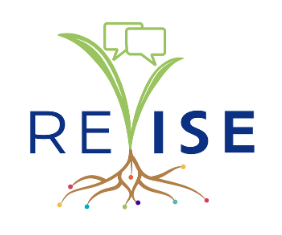August 1st, 2017 | RESEARCH
Counterspaces in science, technology, engineering, and mathematics (STEM) are often considered “safe spaces” at the margins for groups outside the mainstream of STEM education. The prevailing culture and structural manifestations in STEM have traditionally privileged norms of success that favor competitive, individualistic, and solitary practices—norms associated with White male scientists. This privilege extends to structures that govern learning and mark progress in STEM education that have marginalized groups that do not reflect the gender, race, or ethnicity conventionally associated with STEM mainstream success, thus necessitating spaces in which the effects of marginalization may be countered. Women of color is one such marginalized group. This article explores the struggles of women of color that threaten their persistence in STEM education and how those struggles lead them to search out or create counterspaces. It also examines the ways that counterspaces operate for women of color in STEM higher education, particularly how they function as havens from isolation and microaggressions. Using a framework of Critical Race Theory (CRT) and intersectionality theory and drawing on interview data from 39 women of color about their STEM higher education experiences, we describe five ways in which counterspaces operate: in peer-to-peer relationships; mentoring relationships; national STEM diversity conferences; STEM and non-STEM campus student groups; and STEM departments. Whereas most research has discussed counterspaces as racially or ethnically homogeneous social groups of peers at the margins, our research found that counterspaces vary in terms of the race/ethnicity, gender, and power levels of participants. We found that counterspaces can be physical settings, as well as conceptual and ideological. Additionally, we identified counterspaces both at the margins and at the center of STEM departments. Thus, our research expands the existing understanding of the types and functions of counterspaces and broadens the definition of what locations can be and should be considered counterspaces.
Document
(no document provided)
Team Members
Maria Ong, Author, TERC IncJanet Smith, Author, TERC Inc
Lily Ko, Author, TERC Inc
Citation
Identifier Type: DOI
Identifier: 10.1002/tea.21417
Publication: Journal of Research in Science Teaching
Volume: 55
Number: 2
Page(s): 206-245
Funders
Funding Source: NSF
Funding Program: REAL
Award Number: 0909762
Funding Program: Computing Ed for 21st Century
Award Number: 1240768Funding Source: NSF
Funding Program: Computing Ed for 21st Century
Award Number: 1451341
Related URLs
Full Text
Beyond the Double Bind: Women of Color in Science, Technology, Engineering, and Mathematics
BP: Computing Beyond the Double Bind: Women of Color in Computing Education and Careers (2013-2014)
BP: Computing Beyond the Double Bind: Women of Color in Computing Education and Careers (2014-2016)
Tags
Access and Inclusion: Asian Communities | Black | African American Communities | Ethnic | Racial | Hispanic | Latinx Communities | Indigenous and Tribal Communities | Women and Girls
Audience: Educators | Teachers | Museum | ISE Professionals | Scientists | Undergraduate | Graduate Students
Discipline: Computing and information science | Education and learning science | General STEM
Resource Type: Peer-reviewed article | Research Products
Environment Type: Higher Education Programs | Informal | Formal Connections
